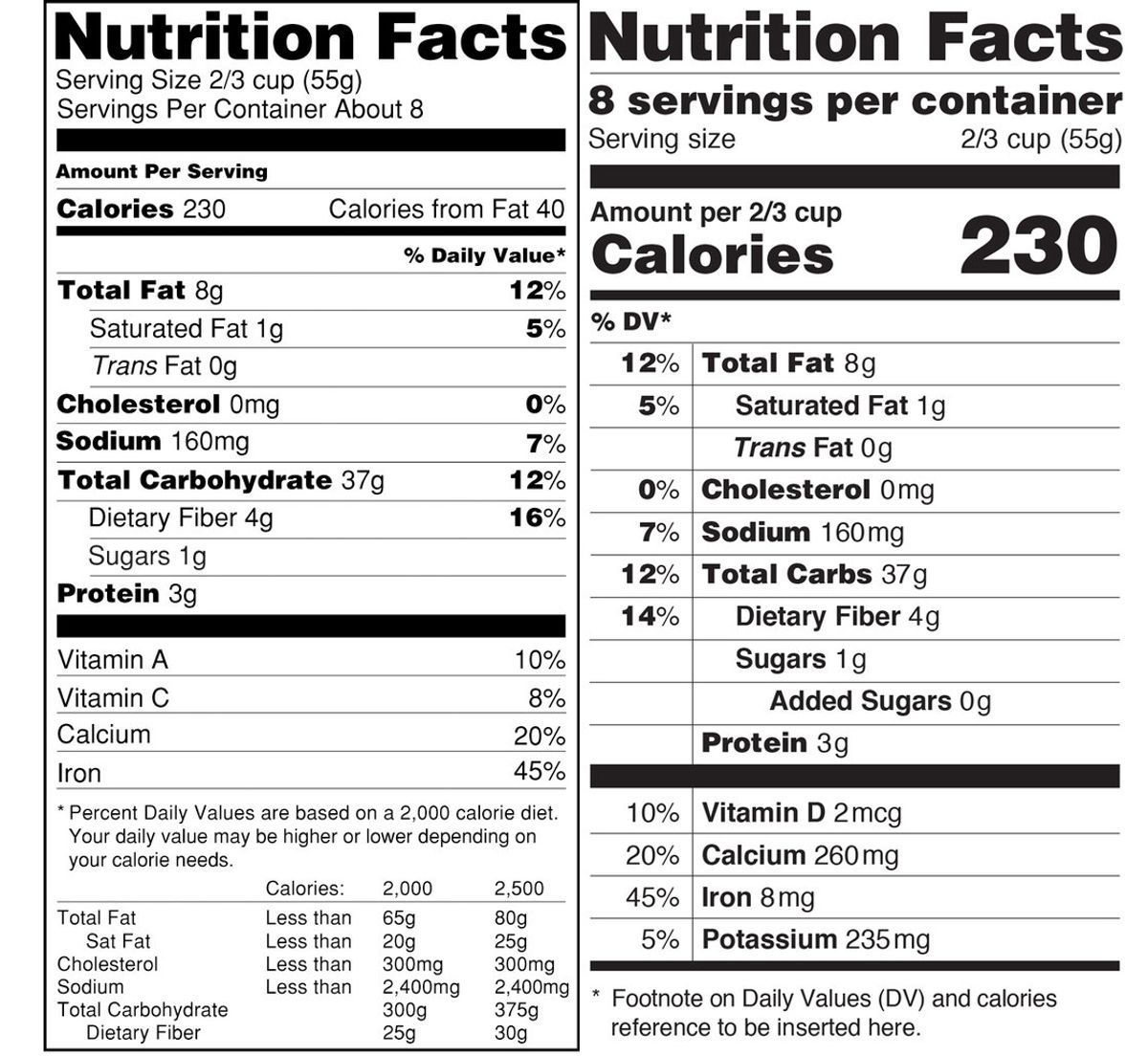Well, here they are: the FDA's new and improved nutrition labels.
They look a lot like the old ones, except for the fact that there's no way you can miss the calorie count anymore. Also changed: serving sizes, which have been adjusted "to better align with how much people really eat." You no longer have to do math to avoid tricking yourself into thinking you're consuming fewer calories than you are: For example, an 8-ounce and a 20-ounce bottle of the same soda will each count as one serving, with calorie counts to match. No more of this "2.5 servings per container" nonsense. (The above example doesn't include this feature, presumably because whatever food it's representing isn't meant to be eaten in one, 1,840 calorie serving. According to the FDA, larger packages will contain dual columns detailing the information for both individual servings and entire packages.)
Also new are added sugars -- the stuff that isn't naturally present in whole foods like fruit and that's linked to a bevy of health risks. "Calories from fat," on the other hand, have been eliminated due to the term's simplicity: There are good fats and bad fats, and which kind you're getting matters more than how much you consume. vitamin D and potassium, two nutrients that the FDA says are underpromoted, are replacing vitamins A and C, two nutrients that are apparently overrated.
The recommended daily value for sodium (also known as salt) has been slightly lowered, and the daily values for fiber and vitamin D will be tweaked as well.
As of now, the labels are still just a proposal -- health advocates are likely going to have a lot to say about them, as will the Grocery Manufacturers' Association. The public comment period will be open for the next 90 days; if they pass, we can expect to see them slapped on our packaged foods by next year.







Shares